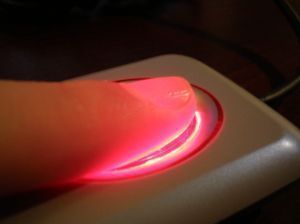What is Fingerprint Identification?
Fingerprint identification is the process of using fingerprints to identify an individual. This is very effective because each person has completely unique fingerprints that do not change with age. Fingerprint identification is used for a variety of reasons: security, criminal investigations, and even ergonomics. Fingerprint identification often consists of a fingerprint reader or oil smear, with the former being used in electronic fingerprinting and the latter being used in manual fingerprint impressions. Other surfaces or materials may be used in fingerprint identification but are usually only found in accidental fingerprint impressions. There are several different types of fingerprints that can each be used for a specific purpose. These types of fingerprints are listed below.
Exemplar Prints
An exemplar fingerprint is one which is deliberately taken from an individual for record-keeping purposes. Exemplar prints are often taken from children or other civil individuals in order to find missing people or identify bodies. Exemplar prints are also taken from individuals upon arrest in order to easily keep track of criminals and identify them if they are ever arrested again. Exemplar prints are usually made by pressing each of the individual's five fingers into a pad of ink and then rolling each of them onto a paper card or official form. More modern systems, however, now involve the use of a card reader and electronic database.
Latent Prints
A latent print is a type of print that is left behind on a surface after a person has touched it. Latent prints can be made from sweat, blood, dirt, oil, ink, paint, and other residues. Most often, however, latent prints do not contain an individual's entire fingerprint and only shows a partial match. This is because latent prints are often smudged or distorted and can also be covered by other prints or marks Latent prints also contain much less detail compared to a real fingerprint or exemplar print that is made under ideal circumstances. Due to their high potential for false readings or partial matches, latent prints are often be discarded as unreliable evidence.
Patent Prints
A patent fingerprint is one which is left in foreign material such as blood, oil, or dirt and is transferred to an object when the individual touches it. While blood, oil, and dirt can all make latent prints as well, patent prints involve the foreign object actually serving as a mold of that fingerprint rather than being just a smeared mark. Because a patent print often serves as a natural, detailed representation of a fingerprint by itself, forensic scientists usually photograph the print rather than try to lift an impression. The actual substance or object that it is on is often taken as solid evidence when possible.
Plastic Prints
A plastic fingerprint is more detailed than any other type. Plastic prints are rarer than other types of prints but have exceptionally high quality and can serve as solid evidence by themselves. Plastic prints are made when an individual sinks his/her finger into a semi-solid material such as grease or wet clay. Under the right conditions, the ridges of the person's fingerprint will press deep enough into the material to leave a high quality mold of the entire fingerprint.
Fingerprint Readers
Fingerprint identification is widely used in the forensics industry, and is becoming commonplace in the security field as well. Electronic fingerprint readers allow computers to scan an individual's fingerprint by using electricity or light, and comparing it to an authorized fingerprint on file. If the computer matches the two fingerprints together, it will take actions to permit the individual to use the system. Examples of devices that use fingerprint readers include locks, doors, and even home computers.




Follow Us!